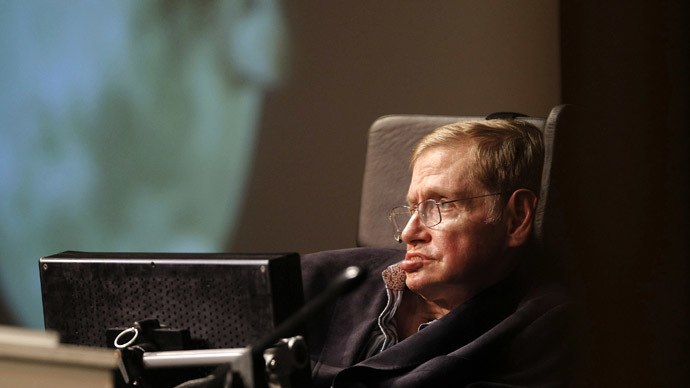Higgs’ elementary particle underpins existence in our universe might become unstable, warns renowned physicist Stephen Hawking. The energy potential of the ‘God particle’ is so vital for the entire universe it could make the cosmos collide, he concludes.
In a preface to a new book he contributed to, which is essentially a collection of lectures gives by famous scientists and astronomers called ‘Starmus’, Hawking shared his concerns regarding the Higgs Boson, that Hawkins suspects of being unstable and potentially capable of decay.
“The Higgs potential has the worrisome feature that it might become metastable at energies above 100bn gigaelectronvolts (GeV),” Hawking wrote.
The imminent danger of that power potential is that it could end time any time soon!
“This could mean that the universe could undergo catastrophic vacuum decay, with a bubble of the true vacuum expanding at the speed of light. This could happen at any time and we wouldn't see it coming,” Hawking explained, acidly noting that “A particle accelerator that reaches 100bn GeV would be larger than Earth, and is unlikely to be funded in the present economic climate.”
Stephen Hawking knows so much he cannot be an optimist by definition. Having spooked the audience once with cruel aliens that could kill us all and with artificial intelligence going the Skynet way one day, and now he is promising the end of the universe. All due to the Higgs Boson elementary particle, which was recently discovered by physicists at CERN's Large Hadron Collider during staged experiments to find this long-ago predicted key element of the Standard Model of particle physics.
The field created by the Higgs Boson is believed to give mass to other particles by slowing their movement through the space vacuum. The existence of such particle was first predicted in the 1960s by British theoretical physicist, Peter Higgs, and six other scientists. However, the hypothesis was only confirmed at the Large Hadron Collider at CERN near Geneva in 2012.
Hawking’s bitter attitude towards the Higgs Boson is understandable, the CNET media outlet recalls. The famous physicist lost a $100 bet that the Higgs particle could be unearthed, plus he made a statement after the Higgs particle was finally identified, that for him physics had become less interesting. After all, as the scientist shared earlier, he believes mankind only has 1,000 years left to leave Earth, anyway.
Higgs Boson ‘cousin’ unearthed
In the meantime, the marvels that followed the discovery of the Higgs Boson particle continue to unravel, as scientists have for the first time properly observed a theoretical ‘cousin’ of the Higgs Boson, The Times reported.
The team that made the new discovery is led by Ryo Shimano at the University of Tokyo. The researches put to use the behavior of photons in superconductor metals, which when cooled to extremely low temperatures, enable electrons to move almost without resistance, 'New Scientist' reported.
Special vibrations, which work effectively as mathematical equivalent of Higgs particles, Ryo Shimano said, shake superconducting material cooled to nearly -273 degrees Celsius to slow down pairs of photons travelling through them, making light act as though it has mass.
This effect is closely linked to the Higgs idea of the “the mother of it actually,” Raymond Volkas at the University of Melbourne in Australia, explained to The Times.
In particle physics, the Higgs field explains the mass of W and Z bosons in the vacuum, whereas the superconductor version explains the virtual mass of light in a superconductor material. Physicists had expected the Higgs-like effect to appear in all superconductors because when super-frozen they expose their most valuable characteristic - zero electrical resistance.
But that became possible only with the help of vibrations elaborated by the Shimano team to observe a very brief pulse of light in its normal state in a superconductor, whereas particle physicists revealed Higgs boson with energetic particle collisions, Shimano said.

